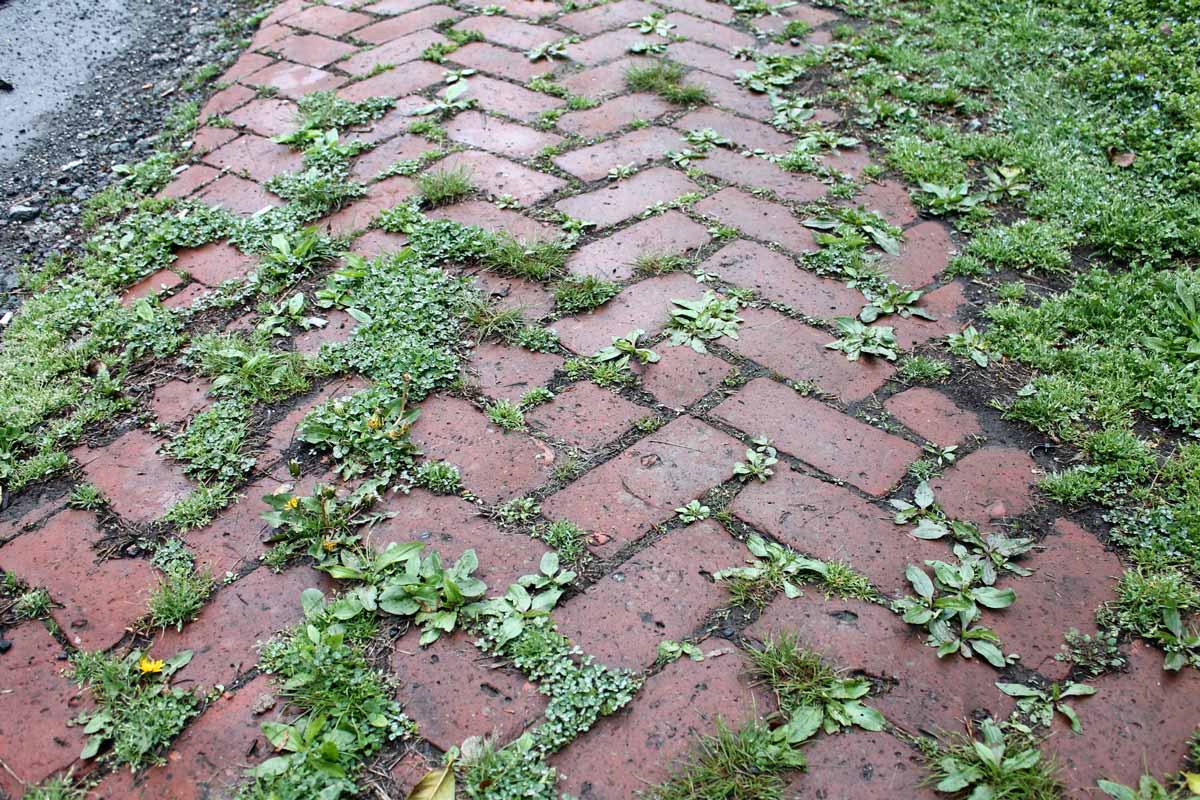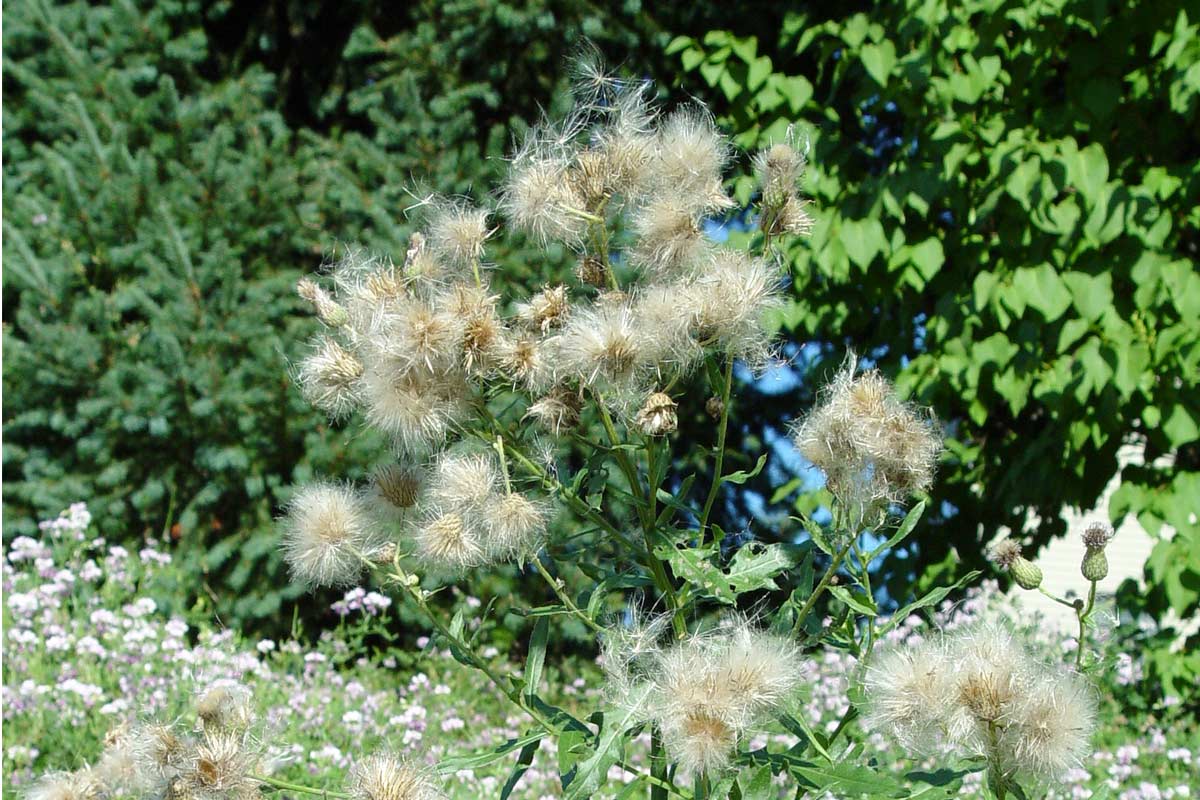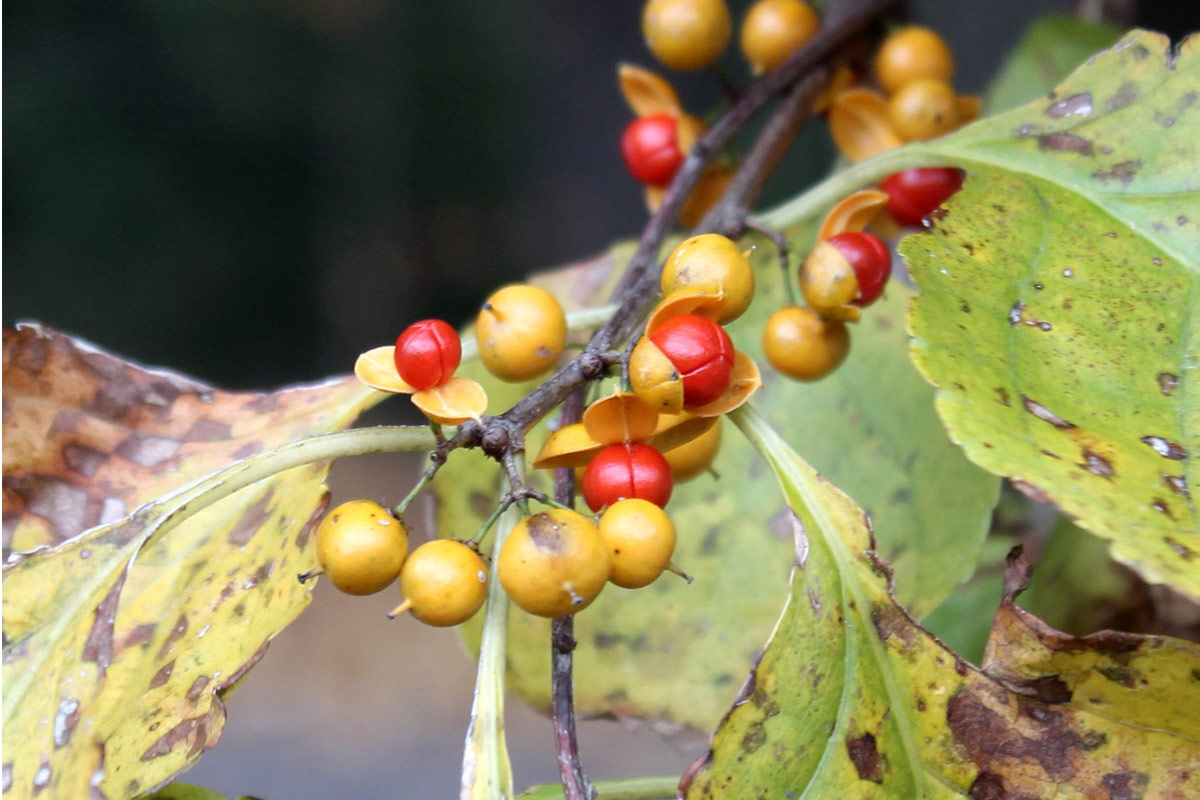Where Are Those Weeds Coming From?
Here are 9 ways weeds find their way to your garden, plus 5 tips to limit their spread.
Weeds are such astonishing survivors because they’re good at spreading into new areas and tough at standing their ground once they get there.
At least 250 of them have developed the ability to fend off some of the best herbicides that mankind has thrown at them. Even repeated cutting and digging sometimes isn’t enough to eradicate such durable come-backers as thistle, tree-of-heaven, and goutweed.
That’s why a front-line weed-fighting strategy is to take away a weed’s No. 1 procreation method – seeds – so outbreaks don’t get started in the first place.

Assorted weeds have seeded their way into the cracks of this brick sidewalk. Photo by George Weigel.
Weeds are some of the planet’s top plants at producing seeds and getting them to sprout far and wide.
Almost all types of weeds have at least some seeding ability. Even perennial weeds that spread primarily by runners or expanding clumps usually get their start from a seed.
And although biennial weeds don’t produce seeds in their first year, they depend on a healthy crop of mature seeds in their second year to keep the colony alive.
Tops on the seed-generation list, though, is annual weeds.
These are plants that fit their entire life cycle into a single season and therefore depend on new seeds to sprout each year.
To ensure that enough of them come up the following season, annual weeds typically produce hundreds of new weed seeds per plant each year. Many produce tens of thousands, and a few can produce a million seeds per plant per year.

Puffy “wings” that float on the wind is one strategy some weeds use to travel far and wide. Photo by George Weigel.
Once seeds are ready, weeds have to disperse them.
Dropping to the ground around the parent plant is somewhat useful, but a better plan is equipping seeds with a way to migrate into new areas.
One good trick is to make them sticky in some way. Catchweed bedstraw and prostrate and spotted spurges are examples of seeds with tiny hairs that latch onto animal fur, bird feathers, shoe soles, and mower wheels.
Even better is the burs on common burdock – a feature that led to the discovery of Velcro.
Weeds such as poison ivy, pokeweed, Oriental bittersweet, Japanese honeysuckle, and mile-a-minute weed spread their seeds inside of fruits. When birds and small mammals eat the fruits, they’ll disperse the seeds in new areas via their “droppings.”
Most effective, though, is taking advantage of water and especially wind to carry seeds into new areas.
While weeds such as hairy bittercress, wood sorrel, and creeping spurges can eject their seeds short distances, ones with puffy seedheads can blow miles away. Examples are dandelions, thistle, milkweed, groundsel, sowthistle, prickly lettuce, and the marathon champion, marestail (a.k.a. horseweed), which has been documented to spread as far as 300 miles away.
Starting out with sheer numbers of seeds is another strategy.
Even at the low end, weeds such as henbit, garlic mustard, and bindweed churn out 200 to 600 viable new seeds per year. Turning one into hundreds is good expansion for any plant.
Trouble really starts with the many that can produce tens of thousands of seeds per plant per year.
Redroot pigweed, Pennsylvania smartweed, chickweed, and dandelions, for example, can each produce 10,000 to 30,000 seeds per year.
Ragweed can produce 50,000 to 60,000 seeds per year. Lambsquarters can do 70,000, while crabgrass and puncturevine can do 100,000. Purslane and marestail are capable of 200,000 seeds per plant per year. And at the high end, Palmer amaranth and groundsel plants are capable of producing up to one million seeds per year.
Making matters worse is that once all of this seed drops, it can remain dormant but viable in the soil for years. Pigweed, ragweed, lambsquarters, Canada thistle, and bindweed are among those that can survive for two decades or more.

Weed troubles can be lessened by removing plants before they have a chance to set seed, such as this Oriental bittersweet vine, which is about to drop mature seeds. Photo by George Weigel.
Step one in countering that kind of seed production and longevity is short-circuiting it. That means killing or removing weeds before they have a chance to set seed – or at least cutting off all flowers before any have a chance to progress into mature seeds or fruits.
Remember, every weed flower you stop today could eliminate thousands of weeds tomorrow.
Read more on why you should never let a weed go to seed
Step two is disturbing the soil as little as possible. Tilling, digging, and cultivating stir dormant weed seeds to the soil surface, encouraging them to sprout in the warmth and light there.
Step three is discouraging seeds from germinating. Three good ways to do that:
Cover all bare soil with a two- to three-inch layer of mulch.
Densely plant with groundcovers, thick lawns, and other desired plants so there’s no room left for a seed to sprout.
Apply granular weed preventers. Preen Extended Control Weed Preventer, for example, can be applied twice per year (once in early spring and once in early fall) to give season-long protection against 130 different weeds.
Preen can be applied over and around most existing garden plants and works best when the granules are lightly watered in after application. See the product label for a list of compatible plants and noted exceptions.
Preen Mulch with Extended Control Weed Preventer is a two-way product that combines weed-preventing granules with mulch.
And in the lawn, Preen One Lawncare is a three-way product that prevents crabgrass and most other summer-annual grassy weeds as well as kills or prevents many summer-annual weeds that plague thin lawns.